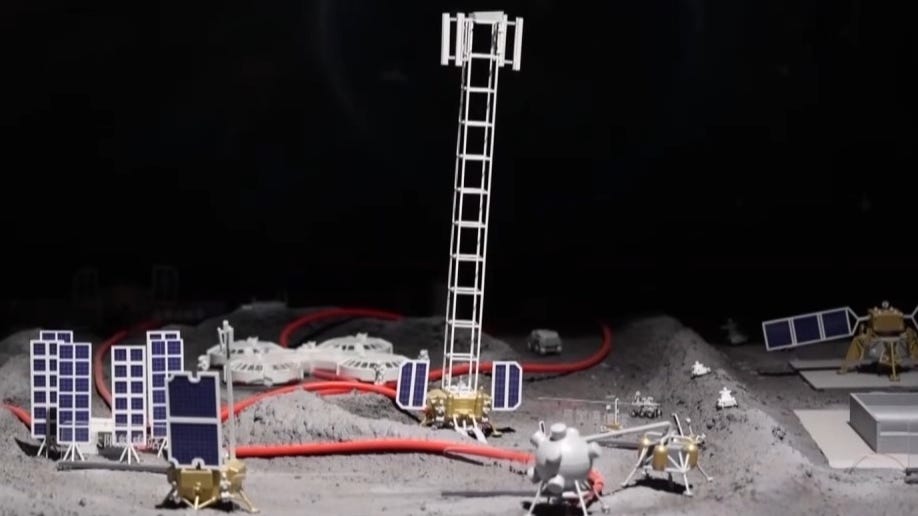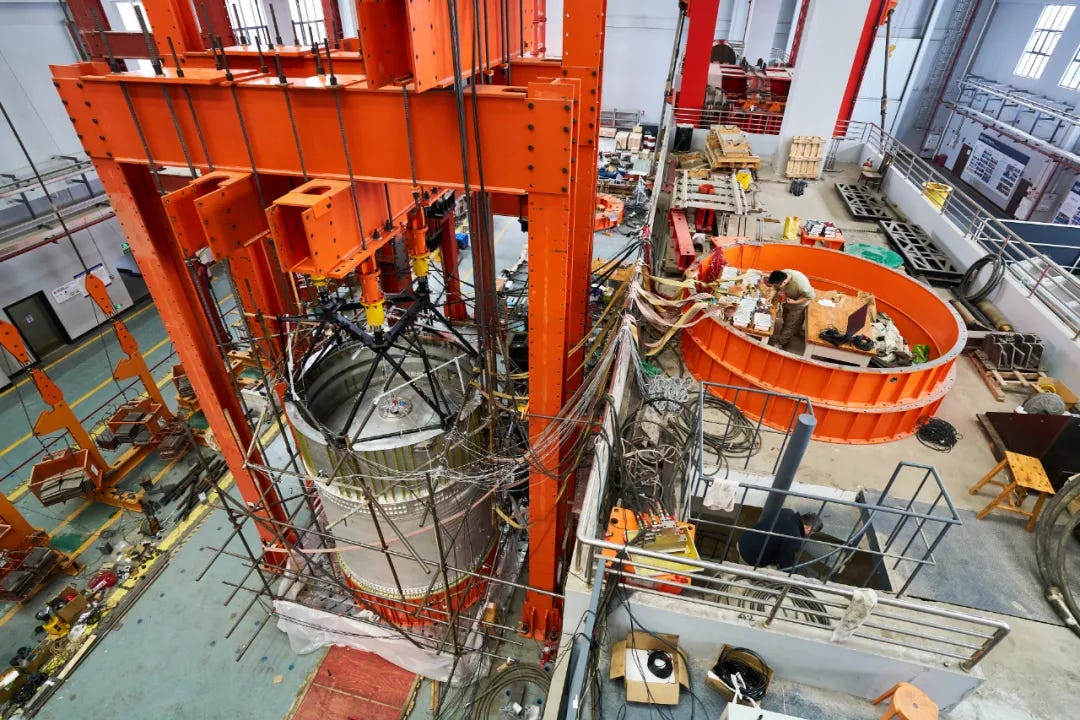Progress Continues on Reusable Rockets, Satellite Technology
Starting the fourth month of the year, the sector remains strong.
The last few weeks have been slower than most due to the Qingming Festival (清明节), or Tomb Sweeping Day, as people take time off to travel back home for the public holiday to look after ancestors resting places. Nevertheless, work across the sector has continued in various areas, along with updates to a few projects.
Additionally, my apologies for focusing on the U.S.-based China space developments back-to-back. America has been awful as of late with its lack of introspection.
Long March 8A Y2 vehicle arrives in Wenchang
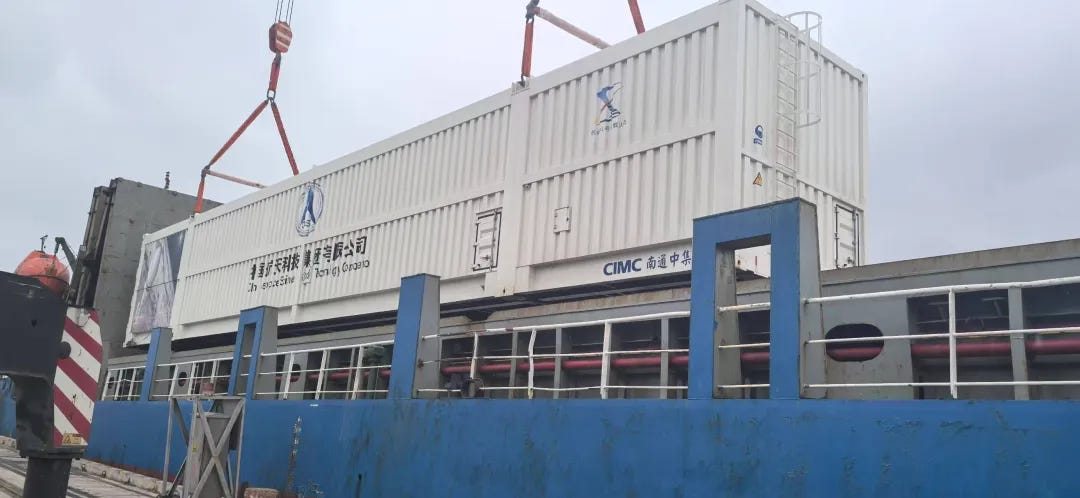
China Rocket (中国火箭) announced on April 11th that the Long March 8A Y2 launch vehicle has arrived at the Wenchang (文昌市) launch sites following shipment from Tianjin (天津). The rocket departed the port on March 29th and arrived in Wenchang’s port on April 6th.
According to China Rocket, the Long March 8A Y2 launch mission will occur in the middle of the year, possibly May or June, from Commercial Launch Pad 1 at the Wenchang Space Launch Site. This would be the vehicle’s first flight from the Long March 8 series dedicated launch pad, and the launch pad’s third overall (the second is currently expected on April 20th) following its first launch on March 11th.
China Rocket noted that during the transportation of the launch vehicle, various cost savings were made for a claim of over twenty percent. Cost-saving measures were said to be an open bidding process, and thorough investigation of potential contractors, among other undisclosed criteria.
As the Long March 8A’s launch cadence grows in the coming years, China Rocket expects the vehicle to become China’s low and medium Earth orbit workhorse.
LandSpace maintains six Zhuque-2E flights for 2025
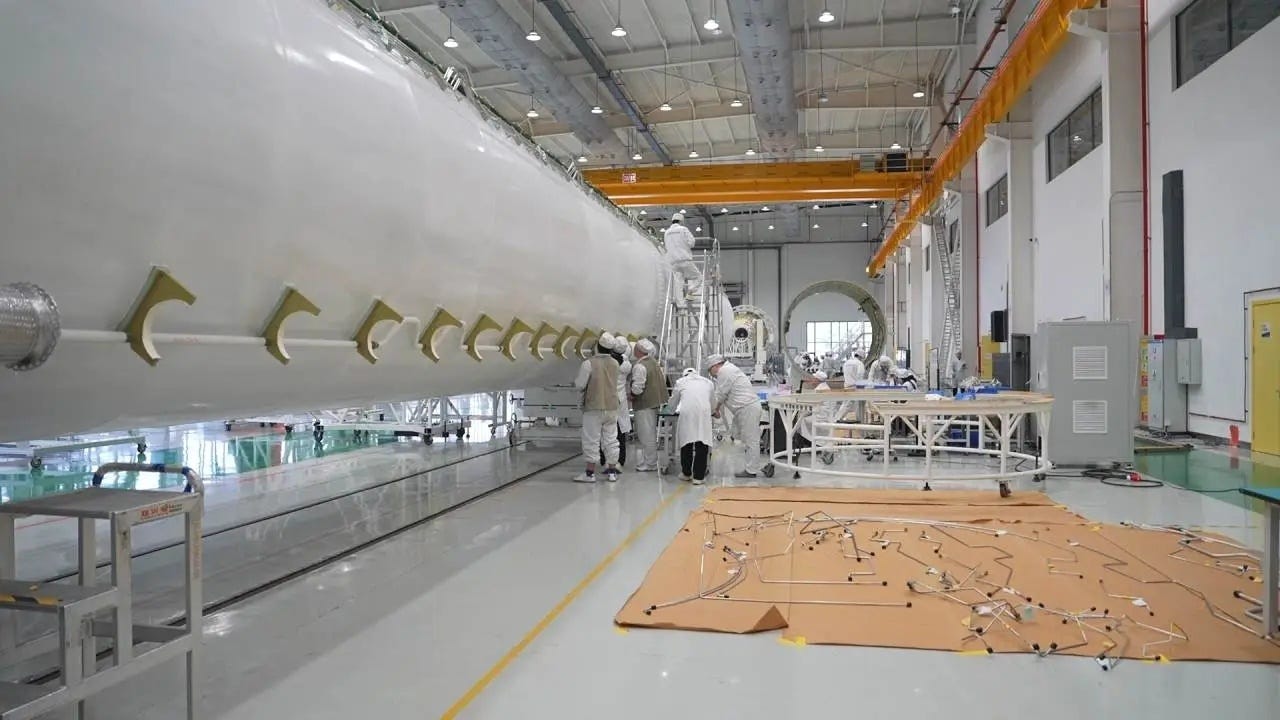
Officials from the Jiaxing Port District’s blog (嘉兴港区发布) recently gained access to LandSpace’s facility in the district, located in, as the name suggests, Jiaxing (嘉兴市), Zhejiang Province (浙江). During their visit, various pieces of hardware were photographed and engineers talked about the Zhuque-2E launch vehicle.
The report quickly notes that Zhuque-2E has entered its planned mass manufacturing with one vehicle largely complete. LandSpace’s Head of Rocket Assembly at Jiaxing, Zhang Shilin (张世林) shared:
“The rocket we’re seeing now has nearly 70 percent of the assembly work done. The assembly of the power systems piping and the cable avionics system is currently under way.”
It was also shared that two Zhuque-2E rockets have been shipped to the Jiuquan Satellite Launch Center, with plans to launch six from the site in 2025 (known since February). So far Zhuque-2E has flown once, in November 2024, with a second flight previously expected around the end of December. Ace of Razgriz on Twitter believes the delay is due to an engine issue, as an abnormal plume was observed on the first-stage shortly after liftoff.
Additionally, the report expects Zhuque-3 to debut this year. Zhuque-3 is a two-stage partially reusable launch vehicle with plans to lift up to 21,300 kilograms to low Earth orbit when expended, 18,300 kilograms when landing downrange on a drone ship or landing pad, or 12,500 kilograms when returning to the launch site. This has been known since February along with plans for a first-stage landing this year.
Space Pioneer delays Tianlong-3 debut to July
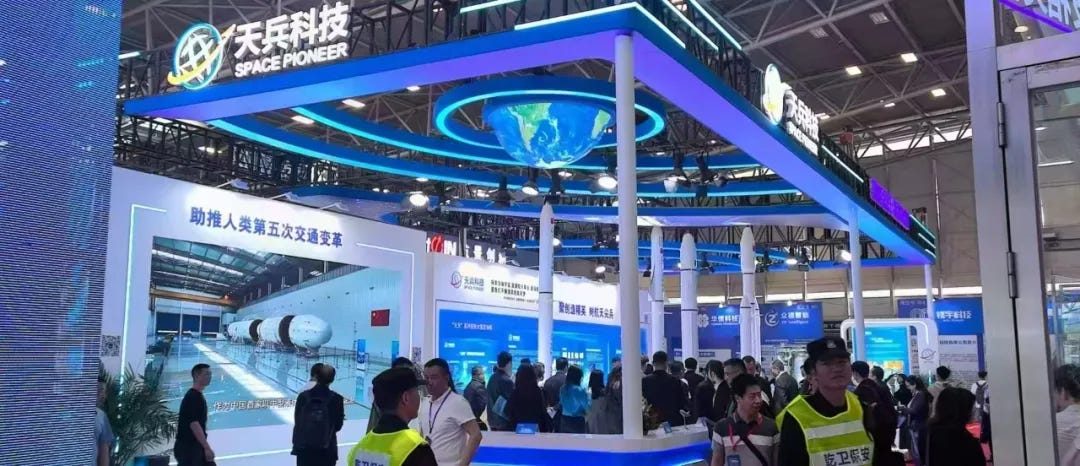
At the Shanghai National Defense Technology and Industrial Equipment Expo 2025 (上海国防科技工业装备与信息技术博览会), Space Pioneer’s Brand General Manager Su Shenghua (苏圣华) shared that the company is looking to perform Tianlong-3’s maiden flight in July or August of this year. This is a delay of one month from a previously expected June debut.
In its current design, Tianlong-3 is a two-stage liquid-fuelled partially reusable launch vehicle expected to be capable of carrying 17,000 kilograms to low Earth orbit. Speaking on the vehicle’s international competition, Su Shenghua stated:
“Our direct competitor is Musk's Falcon 9, which has a low-Earth orbit carrying capacity of 17 tons and a sun-synchronous orbit carrying capacity of 14 tons. It is also the liquid carrier rocket with the largest carrying capacity in our current commercial aerospace industry"
At the expo, it was reiterated that Space Pioneer still has a tri-core version and a point-to-point transportation system based on Tianlong-3 in its plans. The tri-core Tianlong-3 is planned to be able to lift up to 68,000 kilograms into low Earth orbit while increasing the vehicle’s height to 88 meters due to a stretched second-stage. A point-to-point transportation version of the rocket will have the second-stage and fairing replaced by a spaceplane that could send thirty passengers anywhere on Earth within forty-five minutes. Sharing details on the point-to-point variant, Su Shenghua shared:
"The Tianlong-3M series is our company's vision product and is already in the planning stage. What will be realized in the future is rocket flight. The current plan is to carry 60 people at a range of 14,000 kilometers. It is a product that can truly bring rockets into the lives of ordinary people in the future. In the future, every ordinary person may be able to take a rocket just like taking an airplane, realizing the vision of one-hour direct access to the world, that is, flying from Shanghai to New York within an hour.”
If there are any problems with these translations please reach out and correct me.
Celebrating twenty years of lunar exploration
China is celebrating twenty years since the establishment of its lunar exploration program, China Lunar Exploration Program (CLEP). To celebrate, an exhibition has opened in Beijing’s National Museum of China (中国国家博物馆), open until June, to provide a comprehensive overview of the country's lunar exploration efforts, which began with Chang’e 1 in 2007.
Exhibits on display include a model of the future International Lunar Research Station, a China-led joint project of thirteen countries and many organizations, pictures and documents collected since CLEP’s approval, as well as surface samples from the Chang’e 5 and Chang’e 6 missions. The samples from the mission are on display together for the first time.
Wu Weiren (吴伟仁), Chief Designer of China's lunar exploration program, was present for the opening of the exhibition and spoke to Xinhua. Speaking with the news agency, Wu noted that China’s exploration program has gathered a wealth of geological and environmental data, uncovering new elements, minerals, and phenomena. Additionally, he revealed that teams are developing a solar-powered device capable of melting lunar soil at temperatures of 1,400 to 1,500 degrees Celsius to produce "lunar bricks" through 3D printing, which will be necessary to make resources for a lunar surface station without bringing building materials on a spacecraft.
Looking to the near future, Wu mentioned that the Chang'e 7 mission will launch in 2026, to explore the environment and resources of the south pole of the moon, while the Chang’e 8 mission will launch in 2028, to conduct experiments for the in-situ utilization of lunar resources.
Kinetica-2 completes latest static load test
CAS Space shared on April 7th that it had completed Kinetica-2’s latest static load test, this time with one of the first-stage’s kerosene tanks. For the test, the kerosene tank experienced stresses as if it had two other first-stage common-booster-cores attached during major phases of flight.
According to the company, the tank structure remained in good condition with no damage. Alongside this, displacement and strain of the tank materials were consistent with simulations, providing good confidence for the rocket’s first flight.
Kinetica-2 is currently set to fly its debut mission in September of this year, possibly carrying the Qingzhou cargo resupply spacecraft.
Shijian-19 breeds 'space highland barley'
China’s first reusable satellite Shijian-19, launched on September 27th and recovered on October 11th 2024, carried a variety of seeds from The Ministry of Agriculture and Rural Affairs (中华人民共和国农业农村部), Hainan Province (海南), and Anhui Province (安徽) for its fifteen-day mission. Some of those seeds, highland barley from Xizang, have recently been handed over to scientists in the Xizang Autonomous Region (བོད་རང་སྐྱོང་ལྗོངས། / 西藏自治区).
The highland barley (青稞), is said to be the main food source in the Xizang region as well as a key part of various healthcare products, medicines, and beers. The seeds flown were reportedly selected due to their traits of high yield, extreme temperature tolerance, and pest resistance.
In orbit, the seed breeding process during the Shijian-19 mission included exposing them to cosmic radiation, microgravity, and vacuum conditions in an attempt to introduce desired genetic mutations. Back on Earth, the seeds will be selectively cultivated in search of desired traits, like higher climate adaptability, disease resistance, and greater yields. Speaking on the process, Head of Shannan's (ལྷོ་ཁ་གྲོང་ཁྱེར། / 山南市) Agricultural Technology Promotion Center Dawa Sangzhub said:
"As a major agricultural hub in Xizang, we are committed to securing grain output through technology. Space breeding offers a pathway to develop hardier, more productive crop varieties, ultimately boosting farmers' incomes."
Bluetooth satellite startup raises funds
BlueLink Satcom (蓝凌星通), or Beijing Lanying Xingtong Technology Co Ltd, shared on March 25th that it had completed its angel funding round, raising an undisclosed tens of millions of Yuan (10 million Yuan is equivalent to 1.37 million United States Dollars, on April 12th). According to the company, its angel funding round was led by Lin Ge Venture Capital (麟阁创投) with Hongfu Asset (鸿富资产) and other undisclosed high-net-worth individuals contributing.
BlueLink is aiming to repurpose existing Bluetooth technologies to enable connections to individual devices on the Earth below. Usually, Bluetooth is used to connect devices several meters away but the company believes that firmware upgrades to device chips can enable a space-to-ground service.
Uses for BlueLink’s satellites are expected to be automated traffic and building monitoring as well as for meteorological emergencies in the early stages. Further down the line, the company aims to offer connectivity services to any Bluetooth-enabled device, with devices as small as phones and wearable devices.
BlueLink expects to have its first satellite in orbit in the second half of this year, with plans for up to seventy-two satellites in 2028 for regular global services.
SpaceNews’ Andrew Jones wrote that BlueLink is expected to compete with Seattle-based Hubble Network, which is pursuing a similar service. Additionally, he believes that BlueLink will gain an advantage due to its integration into the Chinese Bluetooth ecosystem.
Geely satellite operating in VLEO
On March 29th, Adithya Kothandhapani shared that one of Geespace’s, a subsidiary of automaker Geely, Geely Future Mobility Constellation satellites was operating in very low Earth orbit (VLEO). Kothandhapani believes that Geespace is demonstrating a sophisticated commercial recovery operation, to demonstrate constellation management and innovative solutions for space operators, with part of his analysis stating:
“Hardly a fortnight into the mission, and a single satellite GeeSAT-3 04 (61014/2024-0159D) started maneuvering to lower its altitude, braking away from the pack. The other eight satellites maneuvered towards the constellation’s operational altitude, maintaining perfect phase amongst themselves.”
“The satellite's dramatic altitude reduction isn't random or experimental — it was a precisely calculated maneuver utilizing Earth's oblateness (J2 perturbation) to achieve a specific operational goal: a makeshift plane-change to replenish the compromised second constellation plane.”
“By reducing its semi-major axis, GeeSAT-3 04 deliberately increased its nodal precession rate — a technique well-known to orbital dynamics specialists but rarely observed so clearly in commercial operations. This approach transforms a prohibitively expensive direct plane change into a more fuel-efficient, though time-consuming, orbital drift strategy.”
I highly recommend the full post, and have attached it below:





